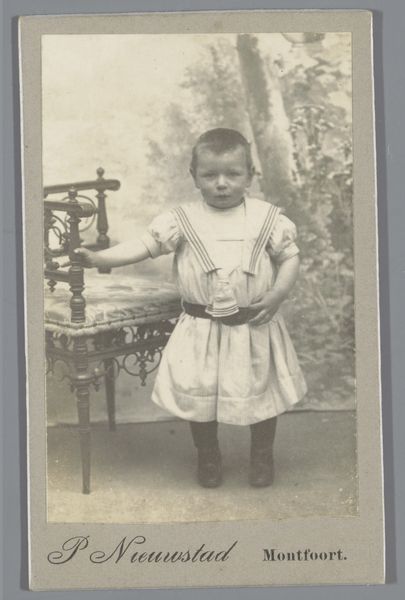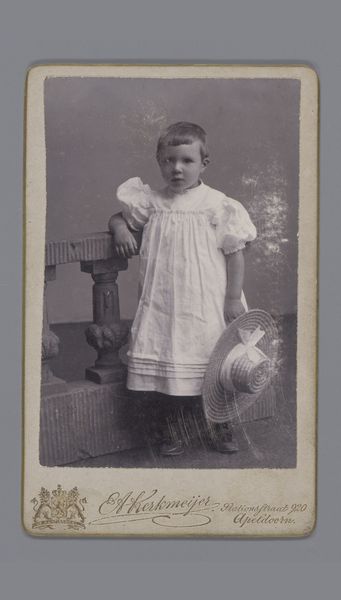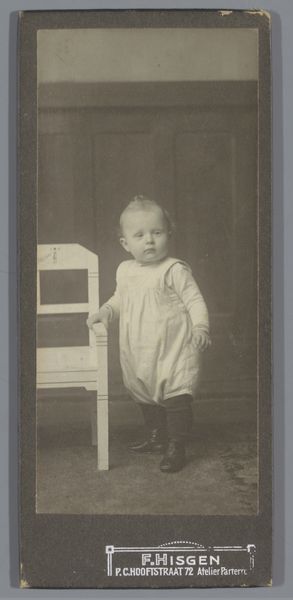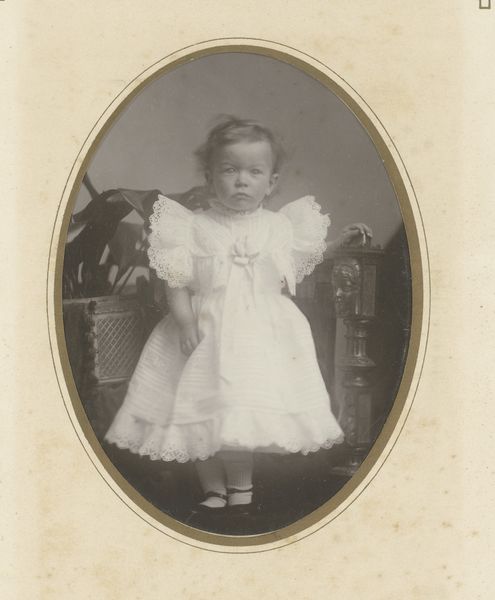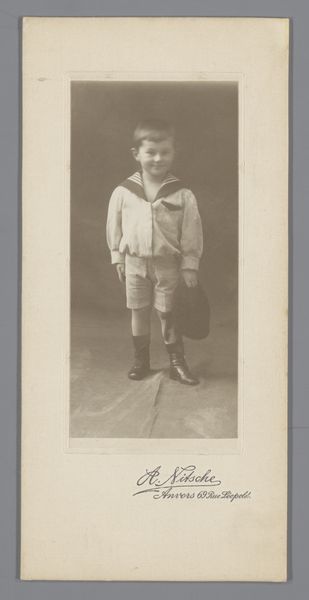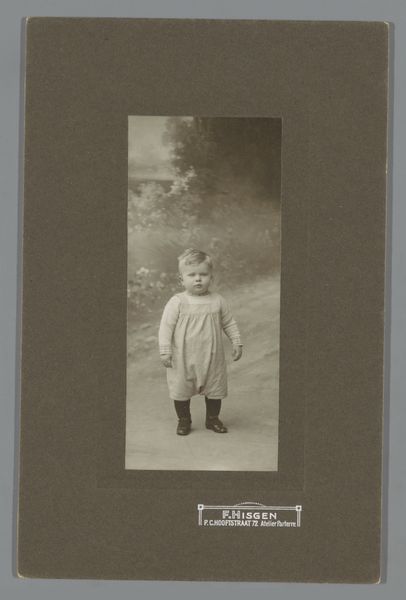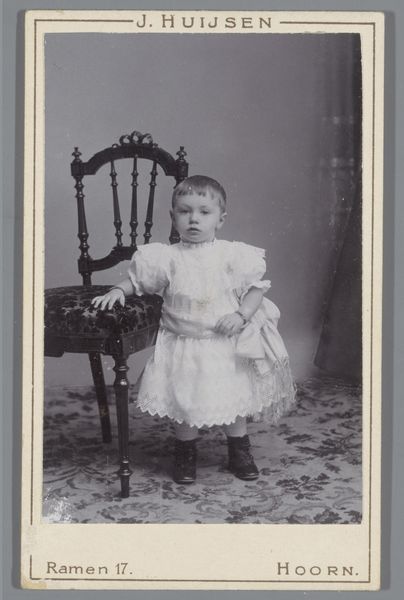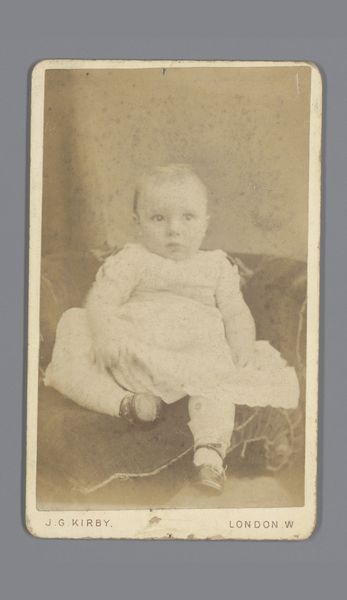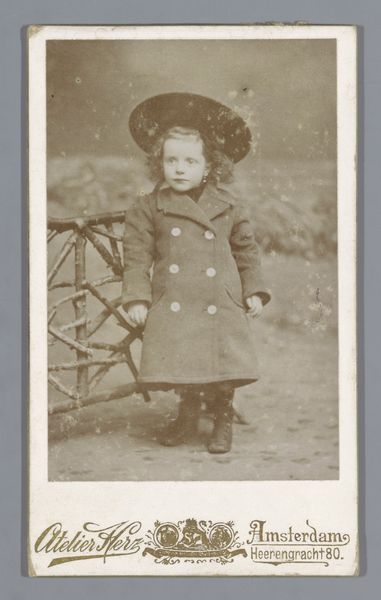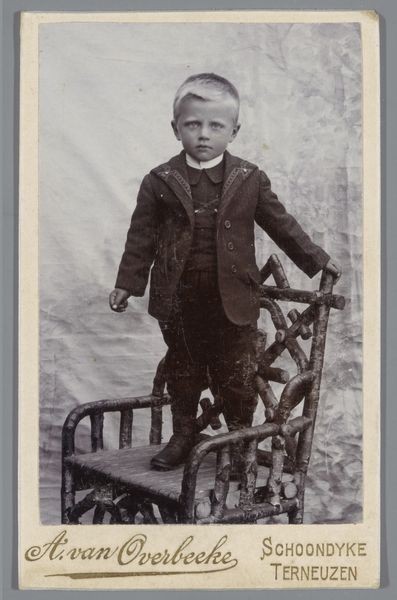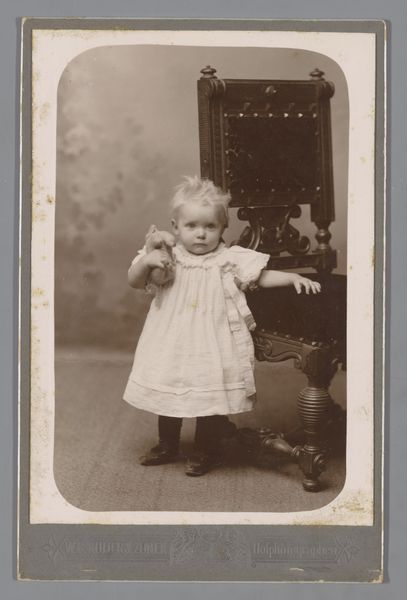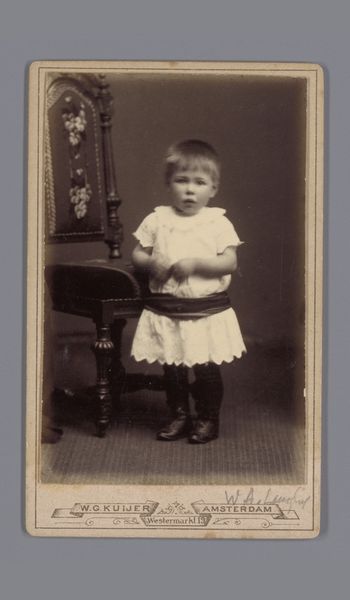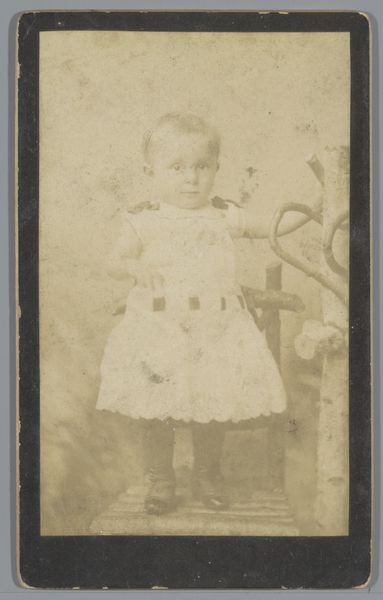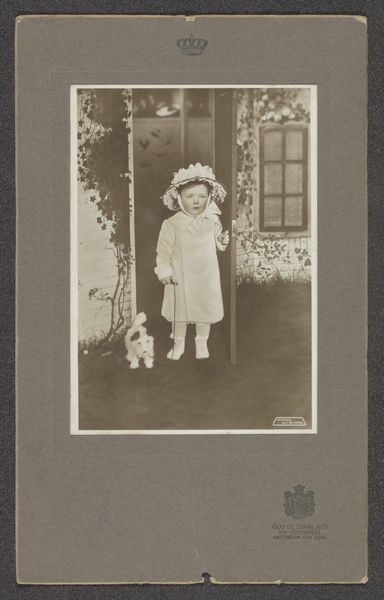
print, photography
#
portrait
# print
#
dog
#
photography
#
coloured pencil
#
realism
Dimensions: height 140 mm, width 89 mm
Copyright: Rijks Museum: Open Domain
Editor: This is "Prinses Juliana," a 1912 print by Guy de Coral & Co., housed here at the Rijksmuseum. There’s a charming naiveté to it, like a snapshot capturing a staged moment of childhood. What strikes you most about this piece? Curator: What I find particularly compelling is the image’s construction of innocence. This photograph presents a young royal subject. We are looking at a carefully constructed presentation of power and privilege, softened by the accoutrements of childhood—the hat, the little dog. It's easy to read this as just a cute depiction, but consider the era. What messages about lineage, about the presumed right to rule, are embedded in this seemingly innocuous image? Editor: That's fascinating. I hadn't considered the layers of power dynamics at play. So, beyond the surface charm, there’s an assertion of inherited authority being communicated? Curator: Precisely. Notice the framing: a doorway, a controlled environment. The soft lighting and delicate details evoke an atmosphere of curated purity. This is not just Juliana; it's an idealized representation designed to instill a sense of confidence and continuity in the monarchy, particularly in a time of societal upheaval. The inclusion of the dog as the accessory, what does that further suggest about ideas of subjugation in 1912? Editor: So the 'realism' is actually doing quite a lot of work in terms of presenting very specific ideas around class and power, beyond just depicting what's there? Curator: Exactly. It asks us to think about the political function of images, then and now, and whose stories they prioritize. What does this type of imagery do? It’s really thinking through who benefits, how are women depicted and who benefits, whose interests are served. Editor: This has definitely given me a new lens through which to view not only this photograph, but portraiture in general. Curator: And hopefully, to question the narratives embedded within seemingly simple representations of childhood and power.
Comments
No comments
Be the first to comment and join the conversation on the ultimate creative platform.
